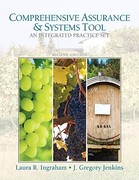The first attached page is the details.The last three are the master budget that needs to be completed.Please use the master budget provided so I can understand.The steps on the master budget are labeled 1-7. Thank You
www) Oxford, Inc., is preparing its master budget for the quarter ended June 30. It sells a single product for $40 each. Sales are 60% cash and 40% on credit. All credit sales are collected in the month following the sale. At March 31, the balance in accounts receivable is $12,000, months follow: which represents the uncollected balance on March sales. Budgeted sales for the next four April May June July Sales in Units . . ......... 800 1,000 600 1,200 The product cost is $20 per unit, and desired ending inventory is 60% of the following month's sales in units. Inventory at March 31 is 480 units. Purchases are paid 50% in the month of purchase and 50% in the following month. At March 31, the balance in accounts payable is $11,000, which represents the unpaid purchases from March. Operating expenses are paid in the month incurred and consist of: Commissions (10% of sales) .Shipping (3% of sales) Office salaries ($3,000 per month) Rent ($5,000 per month) Depreciation is $2,000 per month. Income taxes are 40%, and will be paid on July 1. There are no taxes payable at March 31. A minimum cash balance of $12,000 is required, and the beginning cash balance is $12,000. Loans are obtained at the end of any month when a cash shortage occurs. Interest is 1% per month based on the beginning of the month loan balance and is paid at each month end. If the ending cash balance exceeds the minimum, the excess will be applied to repaying any outstanding loan balance. At March 31, the loan balance is $2,000. Prepare a master budget (round all dollar amounts to the nearest whole dollar) for each of the months of April, May, and June that includes the: Sales budget Schedule of cash receipts . Merchandise purchases budget - Schedule of cash disbursements for purchases of merchandise Schedule of cash disbursements for selling and administrative expenses Cash budget, including information on the loan balanceMASTER BUDGET - FULL 1. SALES BUDGET Period 1 Period 2 Period 3 Period 4 PROJECTED UNIT SALES X SELLING PRICE PER UNIT = PROJECTED SALES 2. PURCHASES BUDGET Period 1 Period 2 Period 3 NEXT PERIOD'S UNIT SALES (use next month's data X ENDING INVENTORY PERCENT = DESIRED ENDING INVENTORY BASED ON SALES + SAFETY STOCK = DESIRED ENDING INVENTORY**** + CURRENT PERIOD'S UNIT SALES (same as above) = UNITS TO BE AVAILABLE - BEGINNING INVENTORY = UNITS TO BE PURCHASED X BUDGETED COST PER UNIT = PROJECTED PURCHASES (used in payments schedule BUDGET COST OF GOODS SOLD (used in income stmt) CURRENT PERIOD'S UNIT SALES X BUDGETED COST PER UNIT PROJECTED COST OF GOODS SOLD3. SELLING EXPENSE BUDGET Period 1 Period 2 Period 3 BUDGET SALES X VARIABLE COSTS (as percent of sales) = VARIABLE SELLING EXPENSES + FIXED SELLING EXPENSES = PROJECTED SELLING EXPENSES (to inc. stmt & cash Budget) (Note: if fixed expenses are given as annual amount, must convert to monthly arnount) 4. GENERAL AND ADMINISTRATIVE EXPENSE BUDGET Period 1 Period 2 Period 3 G & A EXPENSE 1 G & A EXPENSE 2 G & A EXPENSE 3 INTEREST EXPENSE (LONG TERM NOTES) = PROJECTED CASH G & A EXPENSES (to Cash Budget) DEPRECIATION EXPENSE (NONCASHI) = PROJECTED G & A EXPENSES (to income stmt) 5. EXPECTED CASH RECEIPTS FROM CUSTOMERS Period 1 Period 2 Period 3 BUDGETED SALES ENDING ACCOUNTS RECEIVABLE CASH RECEIPTS CASH SALES COLLECTION OF RECEIVABLES (Balance) COLLECTION, Month of Sale COLLECTION, 1st Month After Sale COLLECTION, 2nd Month After Sale COLLECTION, 3rd Month After Sale TOTAL CASH TO BE COLLECTED (to cash budget) (Note: look for breakdown of given balances)MASTER BUDGET - FULL 5. EXPECTED CASH PAYMENTS TO SUPPLIERS Period 1 Period 2 Period 3 Inventory purchases) Schedule 2 info used here CASH PAYMENTS, Month of Purchase CASH PAYMENTS, 1st Month After Purchase CASH PAYMENTS, 2nd Month After Purchase TOTAL CASH PAYMENTS (to cash budget) 7. CASH BUDGET Period 1 Period 2 Period 3 BEGINNING CASH ADD CASH RECEIPTS (SCH. 5) (A) = CASH AVAILABLE (Line A) CASH PAYMENTS PAYMENTS FOR MERCHANDISE (SCH. 6) PAYMENTS FOR SELLING EXPENSES (SCH. 3) PAYMENTS FOR ADMIN EXP EXCLUDING INTEREST (SCH. 4) PAYMENTS FOR INTEREST, LONG TERM NOTES (SCH. 4) DIVIDENDS CAPITAL EXPENDITURES(land, build, equip) INTEREST, SHORT TERM NOTES (B) TOTAL CASH PAYMENTS (Line B) PRELIMINARY BALANCE (EXCESS/SHORTFALL) (Line C) BORROWING REPAYMENT TOTAL FINANCING (Line D) (E) ENDING CASH BALANCE (Line E) Ending Balance, Short Term Note Line C = Line A - Line B. Line E = Line C + Line D










